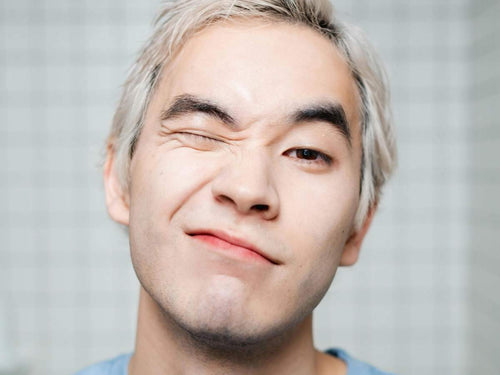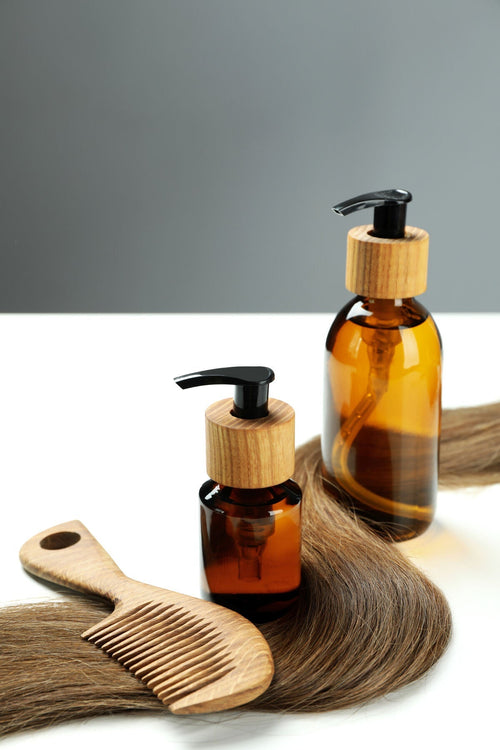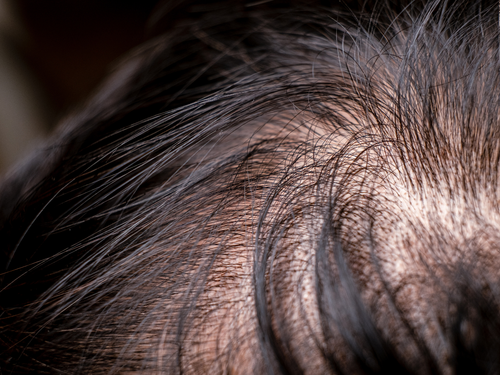

If you've ever noticed thinning edges or bald patches near your hairline after frequently tying your hair back tightly, you're not alone. Many Filipinos—especially women—experience this but often chalk it up to stress or genetics. What you might actually be dealing with is traction alopecia—a condition caused by prolonged tension on the hair roots. In the Philippines, where tight hairstyles like ponytails, braids, and buns are popular for both work and school, this type of hair loss is more common than people think.
In this article, we’ll explore what traction alopecia really is, how to spot the signs, and what you can do to stop and reverse the damage before it becomes permanent.
What Is Traction Alopecia?
Traction alopecia is a form of gradual hair loss caused by repetitive pulling on the hair shaft. It typically results from hairstyles that put constant tension on the hair follicles, especially around the temples, forehead, and nape of the neck.
Unlike genetic hair loss, traction alopecia isn’t about what runs in your family—it's more about what’s happening on your head every day.
This condition is often seen in:
-
People who wear tight ponytails, braids, or buns regularly
-
Individuals who use hair extensions or wigs that are sewn or glued on tightly
-
Those who frequently use rollers, headbands, or pins that tug at the scalp
-
Professionals who need to tie hair back for work, like nurses or food service workers
Early Signs to Watch Out For
Recognizing the symptoms early can make all the difference. Traction alopecia tends to creep up slowly, so it’s easy to ignore at first.
Here are some red flags to look out for:
-
Hair breakage around the hairline or temples
-
Thinning or bald patches, especially where the hair is pulled tightly
-
Redness, itching, or soreness on the scalp
-
Small bumps (folliculitis) that may appear along affected areas
If you're noticing hair loss primarily where your hairstyles pull the most, it's a strong sign that traction may be the culprit.
Why It Happens
Hair follicles are surprisingly resilient—but they’re not invincible. When exposed to repeated tension, the follicles become inflamed and stressed. Over time, this trauma damages the root, leading to weakened hair growth or permanent scarring if left untreated.
In some studies, consistent tension on the scalp can cause long-term follicular damage. In advanced stages, even if you stop the pulling, hair may no longer grow back.
Other factors that can make traction alopecia worse include:
-
Preexisting scalp conditions like seborrheic dermatitis (read more on seborrheic dermatitis here)
-
Use of harsh chemical treatments like relaxers or bleach
-
Excessive heat styling with straighteners or curling irons
For Filipinos who often juggle humid weather with aesthetic preferences, this combination can be particularly harsh on the scalp.
Who Is Most at Risk in the Philippines?
While traction alopecia can affect anyone, it’s especially common among:
-
Women with long hair who wear tight buns or ponytails daily
-
Men who frequently use styling products and hair ties
-
Individuals with curly or coily hair types who often wear braids or dreadlocks
-
Children and teens who follow strict grooming styles in school
Cultural and professional standards in the Philippines often encourage neat, pulled-back hairstyles—sometimes at the expense of scalp health. Even seemingly harmless habits like wearing a headband every day or slicking back baby hairs with gel can contribute over time.
How to Reverse or Manage Traction Alopecia
The most effective treatment starts with removing the root cause—literally. If caught early, simply changing your hairstyle may be enough to restore natural hair growth. Here’s what you can do:
1. Loosen Up Your Hair Routine
Avoid tight styles like high ponytails, cornrows, or tight buns. Instead, opt for loose braids, low ponytails, or letting your hair down when possible. Give your scalp regular breaks from any tension.
2. Switch to Gentler Accessories
Use fabric-covered scrunchies instead of elastic bands, and avoid accessories that pull at the hairline. If you use wigs or extensions, make sure they're not attached too tightly.
3. Soothe the Scalp
Keeping the scalp healthy promotes hair regrowth. Consider using gentle shampoos and conditioners formulated for sensitive or irritated scalps. Scalp massages with natural oils like coconut or argan oil can also help improve circulation.
If you’re managing another scalp condition like dandruff or seborrheic dermatitis, address it first, as inflammation can slow healing.
4. Try Hair Regrowth Treatments
Over-the-counter options like minoxidil have been shown to promote hair regrowth in some traction alopecia cases, particularly if the hair follicles aren’t permanently damaged. Consistent use over several months may yield visible results.
While there isn’t a one-size-fits-all solution, consulting with a dermatologist can help guide you toward a personalized plan. You can also check out our science-backed solutions for hair regrowth.
When to See a Specialist
If your hair isn’t growing back even after changing your routine, it’s time to seek professional help. A dermatologist can assess the condition of your scalp and may recommend options such as:
-
Prescription medications or topical steroids to reduce inflammation
-
Platelet-rich plasma (PRP) therapy
-
Hair transplant surgery (in severe cases)
Also, keep in mind that traction alopecia may occur alongside other types of hair loss, like telogen effluvium—which can happen after stress or illness.
Preventing Traction Alopecia for the Long Term
Prevention is always better than treatment—especially when dealing with something that could become permanent. A few simple changes can help protect your hairline:
-
Alternate hairstyles regularly to avoid repeated tension in the same areas
-
Let your hair down at night instead of tying it up
-
Nourish your scalp with a balanced diet and hair-friendly vitamins
-
Be gentle when brushing, detangling, or styling—especially when your hair is wet
Paying attention to your scalp is just as important as taking care of your strands. After all, healthy hair starts at the root and it’s not too late to start your journey to regrowing your hair.
Traction Alopecia Can Be Reversed—If You Catch It Early
If you're dealing with hair thinning or bald patches that seem to follow the pattern of your go-to hairstyles, it might be time to make a few changes. The earlier you identify traction alopecia and take action, the better your chances of full recovery.
Whether it's updating your hair routine, using the right hair products, or seeking professional care, there are solutions. Explore Andyou's Health Club to learn more about hair loss or consult one of our licensed professionals to find the right treatment for you.

Explore More Guides and Articles You'll Love
Explore our latest guides and articles to help you learn more about the latest trends in the industry.

Androgenic Alopecia
The term Androgenic Alopecia might sound technical and intimidating, but it is simply the medical name for the most common type of hair loss in the world. For Filipino men, it is more commonly known as male pattern baldness. If you are noticing a receding hairline, a thinning "bumbunan" (crown), or that your hair just does not feel as thick as it used to, it is overwhelmingly likely that Androgenic Alopecia is the cause.

Tinea Capitis
If you have ever noticed an itchy, scaly, and circular rash on your scalp, you might be dealing with Tinea Capitis. More commonly known as scalp ringworm or "buni sa anit" in the Philippines, this condition is not caused by a worm at all, despite its name. It is a highly contagious fungal infection that affects the scalp and hair shafts, leading to significant irritation, itching, and sometimes patchy hair loss.

Club Hair
In this post, we’ll explain what club hair really is, how to distinguish it from unhealthy shedding, and what it can tell you about your scalp health. We’ll also dive into what’s normal, what’s not, and what you can do if you notice excessive hair loss.












